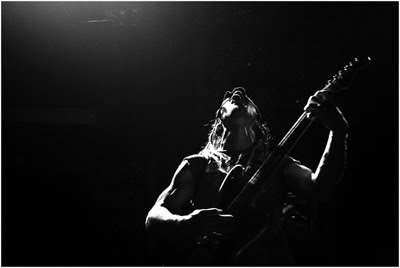
Nowadays autofocus is a standard on pretty much every single camera, from pro model DSLR’s to compact point and shoots. For this article Il be talking about manual focus. This is usually only available on DSLR or Bridge cameras, I.E cameras with interchangeable lenses or “super zoom” cameras. So if you don't have one of these types of cameras this article wont really help you much, but its good stuff to know for the future so read on anyway if you like.
First off, low light. Autofocus relies on light and contrast to hunt the sweet spot. When there isn’t much light, the camera can have a hard time finding and figuring the range of an object from you. So unless you have a focal point that has some light, the lens will just hunt back and forth looking for a range, it wont even let you take a shot in most cases. Manual focus will enable you to get your shots off, although it can be difficult judging if you are in focus when its dark.
Next up is composition. Remember the article on the rule of thirds i wrote yesterday (19/12/09), well using autofocus while practicing the rule of thirds is not going to work, unless you are using spot focus, but that's another article. Say you were shooting a tree in a field, and you wanted to put this tree on the left of the photo. If you use autofocus here with a centralized focus, you will just focus past the tree and get a poor shot. Switch to manual focus and you can have the tree perfectly crisp with a nicely blurred background.
Macro, or close up photography, is another way of utilizing manual focus. When you are shooting macro, your depth of field will be very shallow, and the autofocus will have a hard time hunting for a focal point, as it wont know what you want to focus on. And if you are using a macro extension kit (i wrote about this previously, check out the article for more info ) you will have no option other than to manually focus. Next up, shooting through glass. Imagine you are shooting at a zoo, and the subject of your shot is behind a glass panel, if you use autofocus, odds are it will pick up the glass rather than the object behind it, depending on how clean the glass is, or how many reflections its picking up.
With HDR shots, manual focus is a must. If you are capturing several frames that will be exactly the same, except for exposure, its important you have the exact same focus in each frame. With autofocus on it may choose a different focus point in each frame etc... Its just not worth the risk. For wildlife and high speed action, autofocus can be turned off too. Even the fastest autofocus systems have a hard time keeping up with a flying bird or a motocross rider, therefore its sometimes better to focus on where you expect the subject to be, and wait for the shot. Also the noise from the autofocus motor may scare any wildlife you are trying to shoot, although that isnt too likely.
I hope you enjoyed this and it helped you out with focus issues. Thanks. Photo used in the article courtesy of http://mark1624.deviantart.com Check him out.


